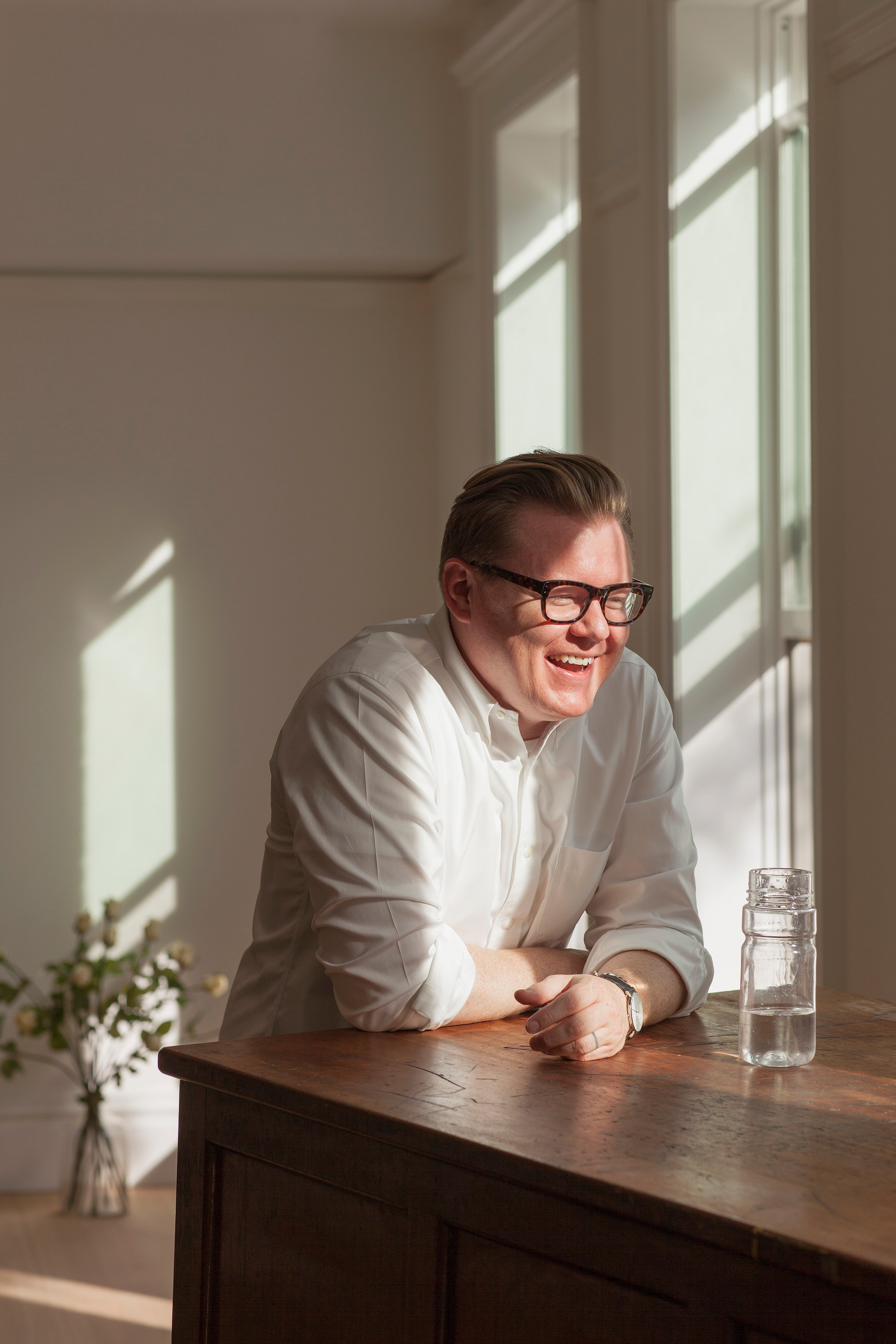The 50 States Project is a yearlong series of candid conversations with interior designers we admire, state by state. Today, we’re chatting with Billings, Montana–based Jeremiah Young, who purchased the retail store and design firm Kibler & Kirch in 2010. He talks about transforming legacy businesses, how the landscape fuels his creativity and his uniquely collaborative design method.
You bought the Montana design firm Kibler & Kirch in 2010. What was your journey to owning the company?
I grew up in the Smoky Mountains in Tennessee. Between my junior and senior years of high school, my family moved to Montana. I subsequently lived in Tennessee again and then in Asheville, North Carolina, but my heart was always in Montana. I have a degree in English literature and then was a librarian for a number of years when I lived in Asheville. During those years, I read every book there was on architecture, interior design and design in general. I was like a sponge. I educated myself about design and interiors—I think that was my college, my interior design program. I don’t have a degree in interior design or architecture, but I would argue that doesn’t matter. The people I know who are the most successful are always the ones who are the most passionate about what they do.
What were some of the books that resonated the most?
It’s easier to find books on architecture than design in terms of solid text as well as visuals. What comes up off the top of my head are books by a man named Witold Rybczynski—have you ever heard of him? He was a professor at Penn State, such a great writer and so approachable, too. He wrote this book called Home: A Short History of an Idea, which I remember reading early on. I would also say that [New York–based designer] Thomas O’Brien is a hero of mine—I know him loosely through some mutual friends—and his books are very well-written as well. Those are some highlights.
How did you end up back in Montana?
My wife is from here. And eventually we just said, we know moving back is ultimately what we want to do, so let’s just go ahead and do it. It seems like, on the surface, there’s not as many opportunities, certainly—where there’s less people, there’s less economic opportunity, right? But that turned out to not be true.
What is it about the place that you love?
The landscape, of course. I also love the relative lack of people and the—let’s just call it “thinking space.” I travel a lot, and every time I step off the plane, I’m like, “Wow, this is such a peaceful place to live.” So I think it has a lot to do with that. Last week, I had to drive to this tiny cabin in a remote part in Wyoming. It takes two and a half hours to get there, but I drive on the Chief Joseph [Scenic Byway], which is—it’s Lord of the Rings beautiful. And I’m just like, this my office. “Oh darn, I had to drive two and a half hours through the most beautiful place in the world to get to my client’s house. This is terrible.”
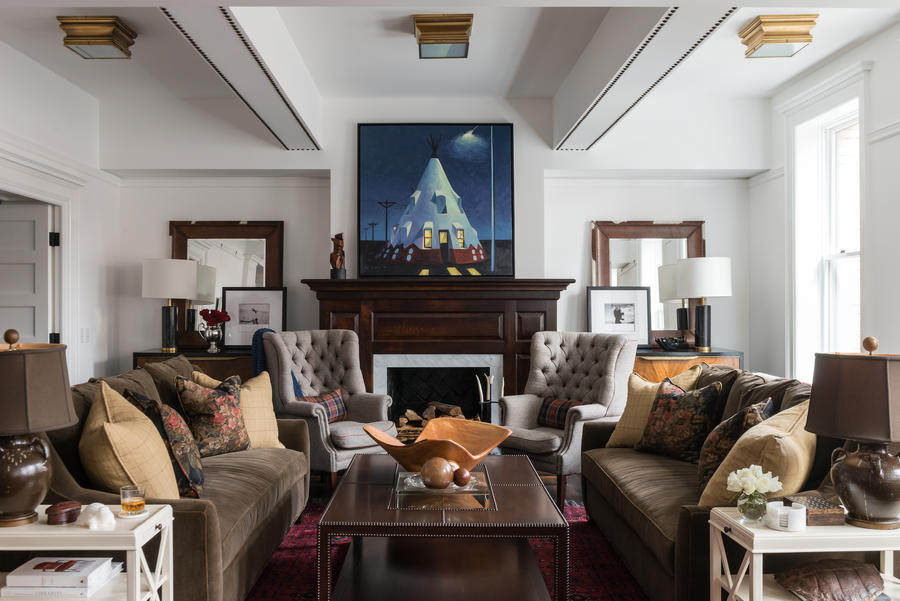
Once you moved to Montana, how did you get into the design business?
I didn’t for a little while. I read all of the books while I was in North Carolina, moved back to Montana, and my wife and I started a contemporary clothing boutique. I also worked for my father-in-law, who has a big engineering firm, and I built some buildings for them. I oversaw the construction and design of a few buildings. What’s funny is all those things gave me the toolkit that I needed to be a designer—dealing with people [and] staff, honing customer service to a really fine level, that kind of thing.
Kibler & Kirch started in 1990. It has always been a design firm, but people have known it in this area because of its store—the most beautiful store in Red Lodge, Montana. I just happened to be going into the store in 2010 right as they were having a retirement sale, and they were going to close the business. Rosina Kastelitz and Erica Hash, who owned the company, were retiring. After [the crash in] 2008, they had a lot of work through 2010, but they were just like, “Oh, man, I don’t know if we want to weather this storm.”
My wife was pregnant—we were just about to have our first baby—and there was a glider chair there. I said, “I love this chair, but can we order it in a different fabric?” And they said, “No, we’re closing the store, so we’re not doing special orders now.” And I’m standing there thinking, Doesn’t somebody want to buy this? And I said that to her: “Doesn’t somebody want to buy this business?” And she said, “Well, if you know somebody who does, have them call me.” I walked down the street and we started talking about it. I was like, “I know what to do with this business. I know exactly what to do with this business.”
Was it that instantaneous? What was the process to buy the business?
It took about 10 minutes? No, but really, it was about a month later—we had figured it out and I was up to my eyeballs in all the things I didn’t know before.
What were some of the biggest surprises when you got in there?
Managing a team was one of the harder things. Even though I had had employees for quite a few years, inheriting a team and a culture can be both good and bad. Kibler & Kirch [already] had this incredible reputation and level of service that’s amazing—I always knew the quality that the brand stands for. So that culture that you inherit is both good and bad because there were employees that had worked for Kibler & Kirch for 29 years, 25 years, 18 years, 17 years. These are longstanding employees and you can’t just come in and be in a rush to change things.
Did it impact how you had to approach the changes you did want to make to the business?
Oh, yeah. It added five years to every decision—even when you know this is the right thing to do with the business. I was probably a little too sensitive to them and to what had always been.
What were some of the things you did want to change about the business?
First and foremost: People knew us as a store, but 80 percent of the business had always been design work. [They didn’t yet have] this mentality of putting design first and putting that out there to the public.
If nobody knew it was a design firm, how did new business come in?
A couple different ways. One is people who come into the store—we have people coming through town from all over the world, and they would be like, “This is the most beautiful store I’ve ever seen.” I have a very good client right now that came through our store years ago and said, “If I ever build a new home, I want these guys to help me.” So that’s one stream of business; the other is word of mouth. I mean, we’re as busy as we could possibly be with our team, and it’s mostly word-of-mouth, and it has been for 30 years. About half of our business is second homes—or third or fourth homes.
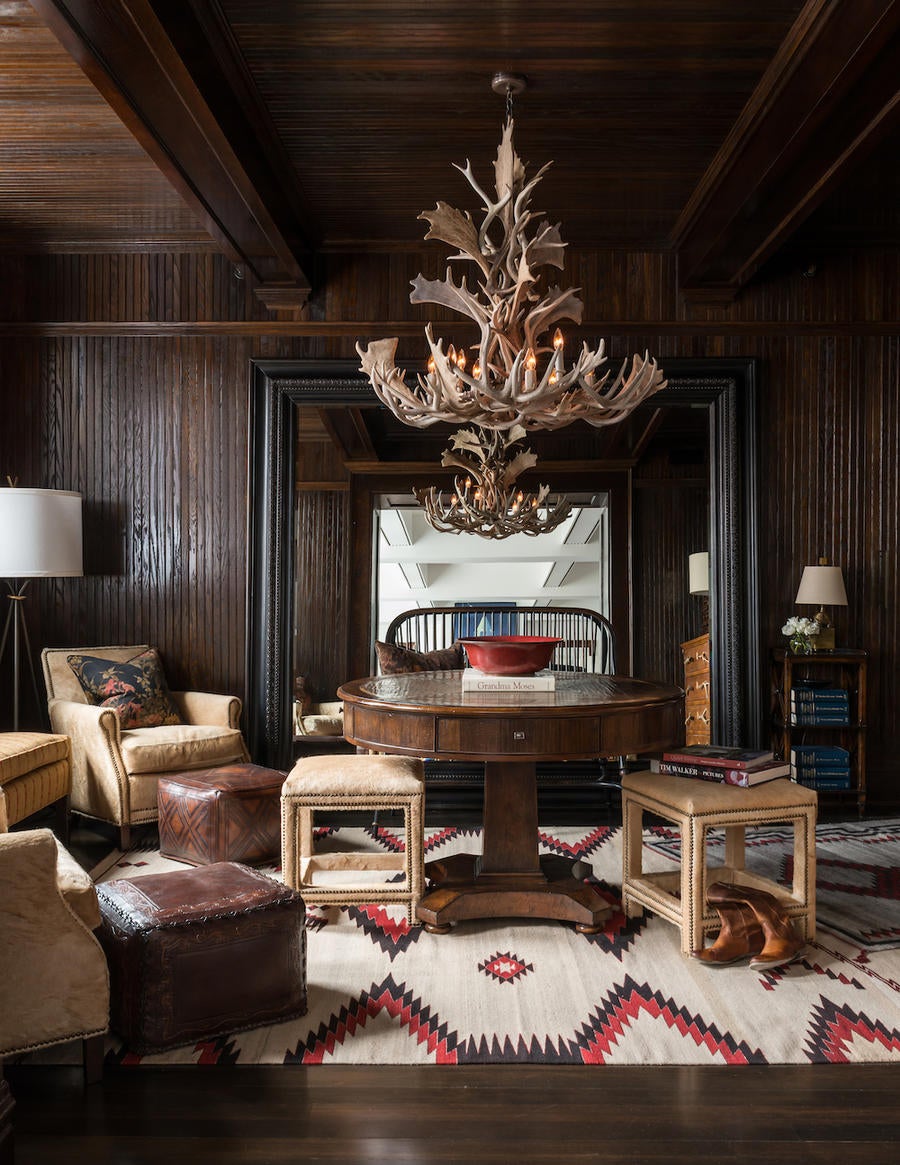

What does your team look like?
There are six of us. At one time, there were 16 of us. Part of that is because we’ve closed our store to move it to Billings. We also had some folks who retired, and then we lost our business manager, who moved away. It happened fairly quickly—you have some attrition from retirement, you lose a couple of people. As much as I would like to think everybody stays with you forever—and some people do, some people obviously stayed for 20-some years—not everybody does, right? I take that hard because I get so attached to my work family that it hurts when somebody leaves.
Is your whole team of six all focused on the design side of the business, or is some of that retail?
It’s all design. One of my big challenges has been managing people. People are needy, right? I mean, they just are. I think we’ve found a way to be much more productive with fewer people. I see this as a common thread in this business—and certainly other designers in this series. For the most part, these are not big teams.
It’s true. I think a lot of designers are finding real joy in staying small.
When I first took over Kibler & Kirch, I had these ambitions of growing it into a really giant firm. Now, that couldn’t be further from the truth—I want maybe a dozen employees at most. [Growing too big] starts to take your focus off the work.
How is the work divided up between the six of you? How hands-on are you able to be with each project?
Right now, we have 25 to 27 projects. I’d say it’s about half new builds, and then there’s the layer of really, really significant remodels. We are always juggling a lot. There are only two projects in all of that where I’m not personally the lead or involved, and those are ones [where] maybe a lot of the work has been done and this is follow-up. We work as pairs, so I always have an assistant on a project.
We become like people’s doctors—we're their people forever. I mean forever. I will get a phone call or a text from a former client on a Sunday: “What kind of light bulb should I put in that light?” And I mean, that’s awesome, right? Clients are so loyal to us and we try so hard to take care of them.
What does that relationship look like once the nuts and bolts of the project are done? You don’t bill for that advice on the light bulb, right?
No, we don’t. Another mistake Kibler & Kirch made in years past was that they didn’t bill for their time, they just charged for the product at the end of the project. But we do bill for time now, which was a major change—that’s something that was a major financial watershed for us. But it’s not like we’re attorneys, where we push that little button and record those minutes when we take a phone call. And then it’s also further complicated because just about every client becomes our friend. These are some of my favorite people in the world! You’re not going to send them a bill for ...
For giving them advice on a light bulb.
Exactly. So we only bill for time when we have structured meetings or a scope of work that’s been defined.
What did making that transition to billing for time look like?
It was really hard—and we’re still in the midst of it. We’ll [finish a project], and then five years later the client is building or renovating another home, or now their daughter is building a house. When you’ve had these clients that you didn’t charge time for in the past, and now you do, it can be complicated. I will say, though, it’s been all our anxiety, not theirs. They have seen the value [of what we do], and outside of the initial discussions about what we charge with a new client, no one has ever balked at the fees. If you bring value, people see that. These are busy people—people who have to charge for their time, too. Their time is super valuable, and they get it.
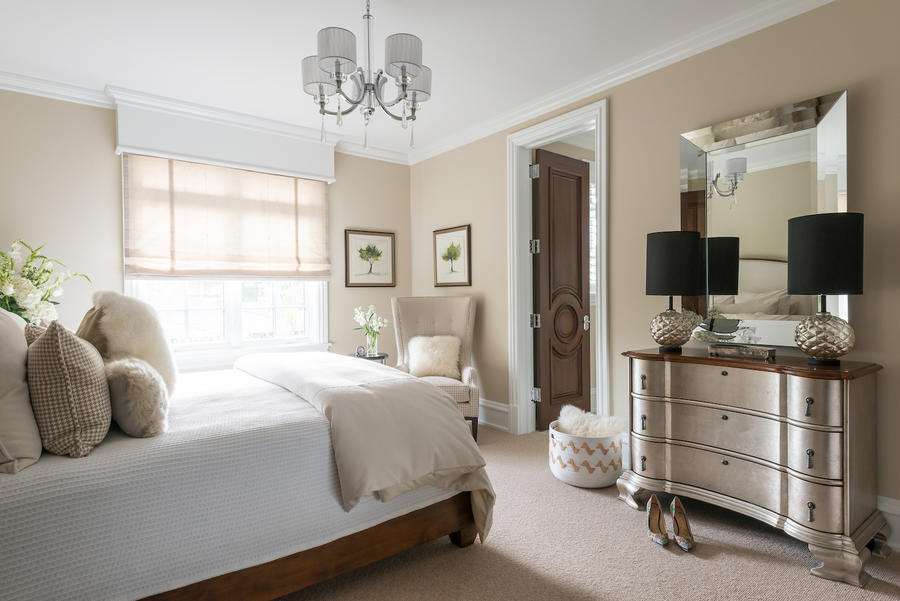
When you’re talking about billing for time, do you bill for the ordering and procurement?
We don’t bill for time we spend doing the paperwork and the administrative side of specifying. We build all of that logistics and ordering into our margin on the furniture, so it just doesn’t seem fair to bill hourly for it—it seems like double-dipping.
We bill for our time in meetings, when we’re really applying our expertise or making selections for people. If we’re doing research or I’m sketching a custom piece. A lot of it is working with subcontractors, too. If we want to have an ironworker build a coat tree, you have to draw it and have all these communications, so we bill for that. But I’m really bad at it—I had so many years of bad habits, of not billing for my time, that it’s hard to [keep track].
What are the nuances of focusing so heavily on second homes—is there greater freedom there than working on a primary residence?
Well, I don’t know if there’s greater freedom, but that’s because of the way we approach it. We have a method that’s totally different than any other design firm that I know of. A lot of designers get hired and then they go away to their studio, put together ideas, then come back and present it to the clients. You’d think that would be the way you would do it with second-home owners, especially, because you don’t always have them in town.
That couldn’t be further from the truth for us. I do not present anything. Ever. Maybe in commercial work a little bit, but not really. Our whole thing is we do the design work with the client—literally, with the client here in the studio.
Here’s a good example: We have some folks from Houston that are building a home in Hamilton, Montana. They flew up from Texas and stayed two days a couple of times so that we could work intently together on the project. We’re working on intimate spaces. These are their homes, and you have to truly get to know them to do good work for them. At the end of a project, the clients feel like they did it—even though, of course, we did, and we steered it heavily.
How does that work?
We spend a fair amount of time getting into their head. We’ll say, “Look through fabrics—without really any intent in mind.” We’ll do the same while looking at styles of furniture and asking what they like. Some clients can’t tell you what they like, they can only tell you what they hate, so maybe that’s what we do instead.
We start with a furniture plan of the house and establishing what sizes of rugs we need. By doing the furniture plan and really studying the function of the home, you already know, “OK, I’m going to put a sofa here and I’m going to have the side table here, but it can only be 24 inches wide by 36 inches deep because that’s all the room you have. And I know that I want a pair of lamps on the far side of the room.” You’ve got a shopping list, really—you’ve established the things you need, and you also know, for example, that you don’t have to look at desks that are more than 60 inches wide, because the office is not big enough. You can eliminate a lot that way.
With that roadmap, you start filling in the blanks. We start by saying, “Let’s look for a bed.” I’ll show you some things that I love, I’ll show you some things that I think work with the architecture, things that are comfortable. We never specify anything that I have not scratched and sniffed, that I haven’t sat on at High Point, or that I haven’t used before.
Working this way requires you to have a real encyclopedic knowledge of your vendors’ products. You’re sourcing with an audience!
You have to be quick on your feet, it’s true. We spend a lot of time at High Point Market—we open it up and we close it down. We’re sitting our butts in everything and really studying it. It helps that we have a store. I mean, if you’re always ordering that dining chair from Lee Industries that you love so much and you’ve had it in the store, people have had a chance to see it, the team has had a chance to see it. The store really helps in that regard.
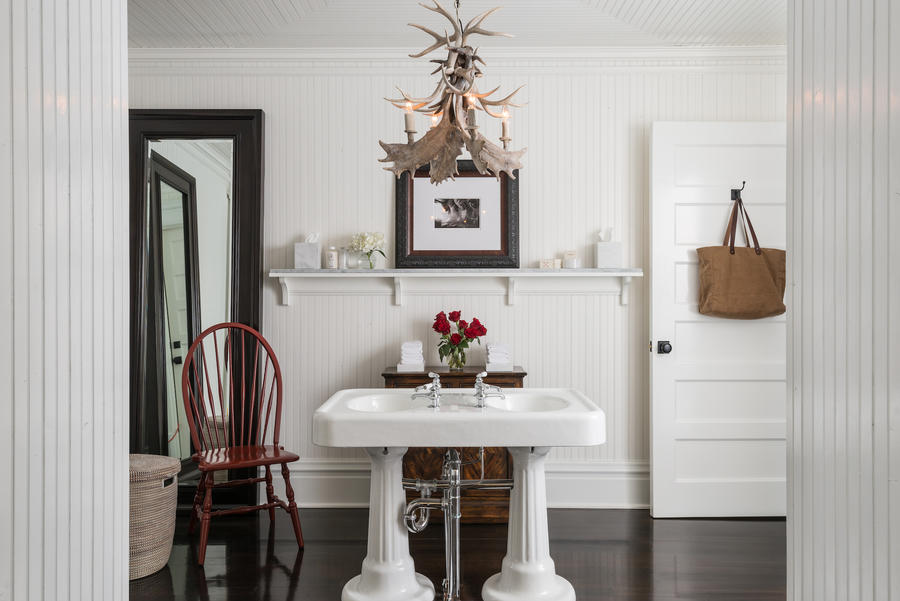
What is the size or scope of most of the projects you’re working on?
It’s a pretty broad range—everything from the little old lady whose house we worked on 20 years ago who needs new sofa fabric, to turnkey projects where we design the thing from a clean sheet of paper through putting toilet paper on the roll. Of the work we have now, there are a few really big projects; it’s actually the little projects that eat your time, but you have to take care of them—the folks whose house you renovated two years ago and they’ve come back to do another room. That’s what your business is for, to take care of those people—to get that repeat business—and you literally have to figure out a way to make time for them.
Where do you shop? You have your store, but you don’t have a design center nearby—how do you navigate that?
We really don’t have anything other than us here, so we procure all the things we need. As a result, we have a huge library. When I do go to design centers—I’ll go to Denver, for example, and when I shop the fabric showrooms, I’ll get a memo of every fabric I even remotely like. I’ll bet we have at least 200,000 fabrics here in our library. If we were in another place, we might not have to do that, because we could go out and look at it.
In addition to High Point, we also go to the other accessory markets—to Dallas, Atlanta, Las Vegas and New York. But really, in terms of the furniture, it’s High Point. I’m really passionate about things that are made really well, but also made in the United States, and you have to go to High Point for that.
Are you a stocking dealer of every line you specify, then?
We’re stocking dealers on a lot of things because of the store. It’s another way of making money: We specialize in these whole homes, and the way we keep our firm going is to take really good care of bigger clients who buy through us. That’s why we need and want a retail store, because a designer’s discount is not as much as a retailer’s. But we’re also accepting all the risk. We’re accepting the risk that we have to do X amount of business with this company—we have to order a certain amount from Highland House and Hancock & Moore and all of our other partners each year, and there’s huge risk in that. You’ve got a million dollars caught up in inventory. So that risk should come with reward too, right? We’ve been in business for so long, and we have the luxury of being in Montana—there aren’t a lot of designers, and there’s even less retail.
So you have all the best brands.
We do. And we have relationships with all the companies that go way back.
Do you feel the difference in that? What does that relationship with the furniture companies bring?
Because we’re here, ostensibly in the middle of nowhere, and we have to have all of our resources here, even if I don’t, say, sell at wholesale $20,000 worth of a certain brand every year, because we’ve been with them a long time and we’re doing our best, they will give us the resources. So we have that ring of leather and samples. They’ll give that to us. This company or that company will give us all their fabrics to shop from. Those relationships are key, because I can’t just go down to the design center to look at all of Lee’s fabrics, for example. I have to have them here.
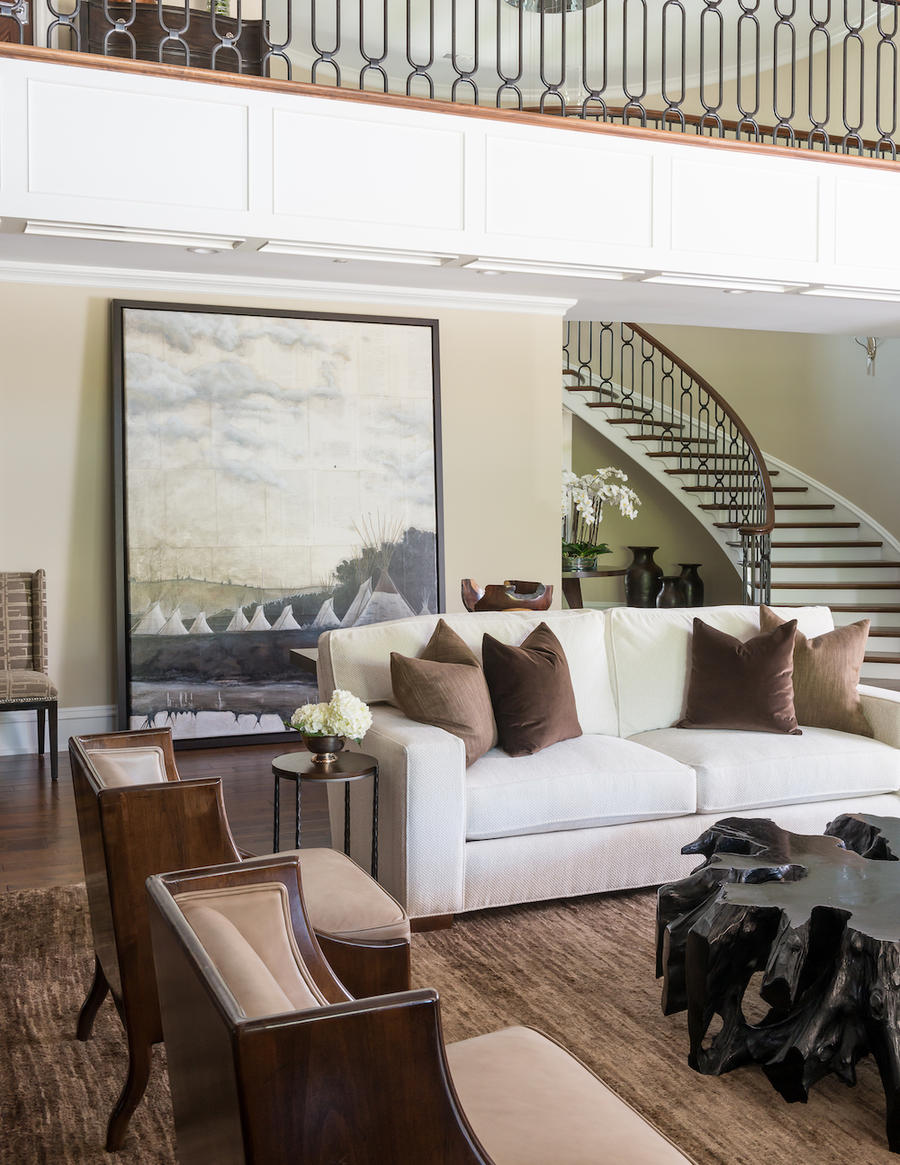
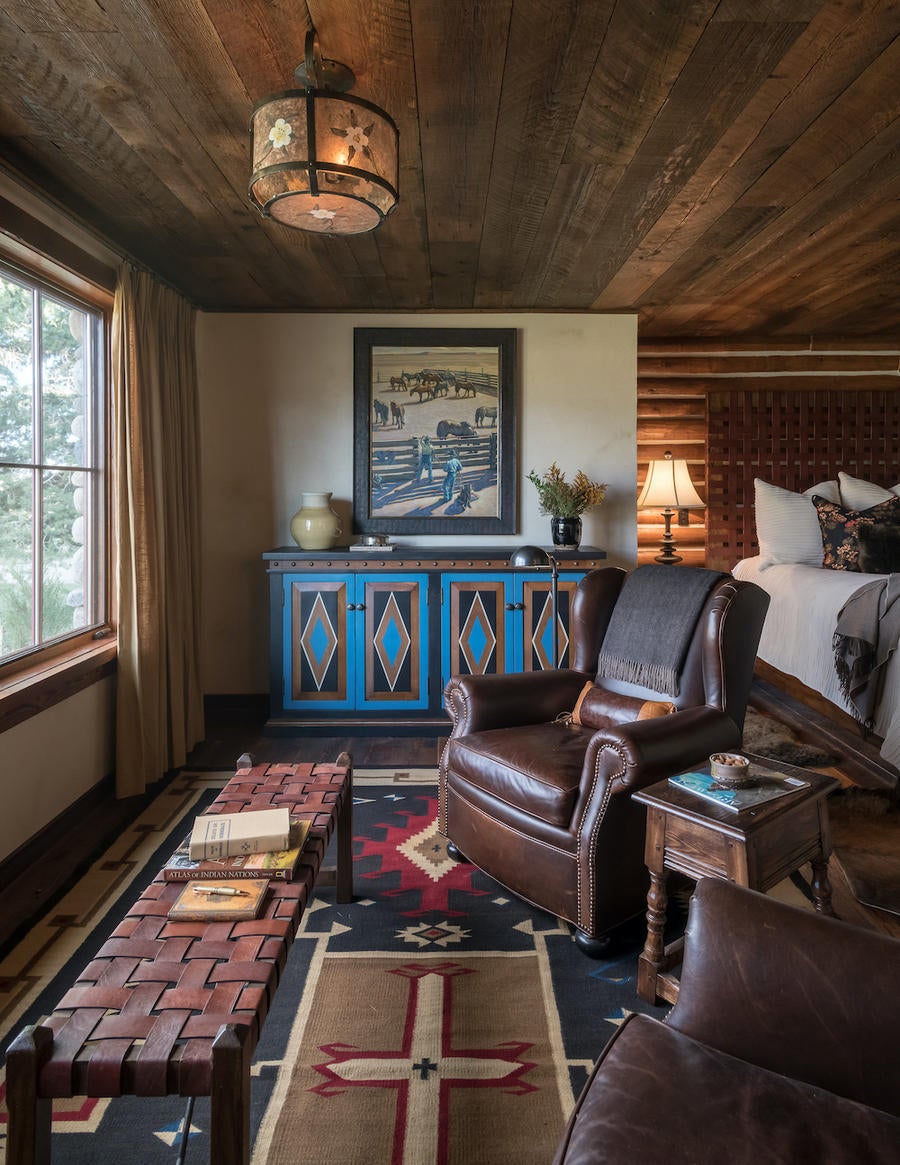
You’ve been the creative director of Old Hickory Furniture for several years now, as well. How did that come about?
Well, as I said, I’m kind of nerdy for the way things are made. We’d used Old Hickory in projects and I loved it. I also grew up in the Smoky Mountains, and Old Hickory played a big part in the early national parks and a lot of those great old park properties, like the Old Faithful Lodge and the Yellowstone Lake Lodge, have original Old Hickory pieces in them that have been in service for 120 years.
About three years ago, my wife’s family reunion was being held in Indianapolis. I knew that Old Hickory was south of Indy, in Shelbyville, and I called up the owner and asked to come see the factory. I went a day early and spent the day with Bob [Morrison, VP of sales and marketing at Old Hickory], going through the factory, getting nerdy on how it was constructed, and I really clicked with him and the product as well. I thought to myself, “This company is such a gem, it just needs help being relevant.”
What was it that you saw as an opportunity?
I think, initially, it started out with the idea that I would design furniture for them that would keep them relevant in the marketplace, and we’ve done some of that. But as it unfolded, I realized that wasn’t exactly all they needed. I did their showrooms for a couple of years, and they had the best markets they’ve ever had. Amongst all this competition—brands like Kohler that had a million-dollar budgets—we won two major hospitality design shows, BDNY and HD Expo, with displays that I put together for Old Hickory. So it’s really a cool thing. Rustic comes and goes—styles come and go, that’s just the nature of it. But it needs to be hip again, and I’m trying to do that.
How do you do that? What is the visual language you wanted to bring to them?
Authenticity and attention to detail. People recognize when something is the real deal.
Was it about looking ahead or really going into the archives?
Both. I’ve designed a couple of pieces that were variations on historical pieces that have sold really well. I don’t necessarily think the problem with Old Hickory was the product. Yes, every company needs to always have new, good things, but it was more about an edit. And this is what I do with my clients, too. A lot of times, these are people who have great taste and great ideas, but they don’t know how to edit them all down into something that makes sense. I put the puzzle together for people—I do that for Old Hickory, I’ve done that for Kibler & Kirch.
What’s next in the collaboration?
I’m taking a little break this year—I’m still going to design furniture, but I’m stepping away [from designing the showrooms] after two really intense years working for them while still doing all the other things that I do.
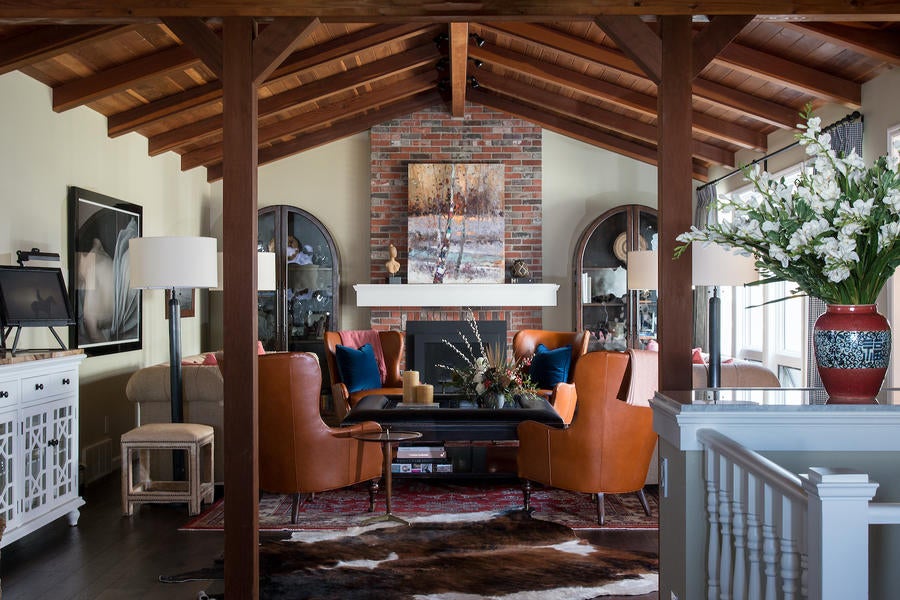
You have a gallery, too. How did that come about?
We started the gallery about four years ago. It’s adjacent to our studio in this lovely old building that we own and renovated, the Stapleton Building. As a design firm, we often use people’s art collections in their homes. But we also sometimes help people amass collections of art. Let’s say you’re moving to Montana—you may love some Western art, but not know who the artists are to even reach out to.
At the same time, people don’t want to buy art from a designer or a store, they want to buy art from a gallery. I get that. Plus, I’m really passionate about contemporary Western art, and especially about art from Montana. They say there are more working artists living in Montana than in any place per capita. We just have such a rich artistic community in our state. So I said, “Why don’t we have this sister business that’s a gallery, and find and represent some of the best artists in Montana?”
In the same way that the retail store had a big staff lift, does the gallery have the same challenges?
It’s an exhibition format, so we take appointments all the time, but we’re not open in the sense that we’re waiting for people [to come in]. We have themed exhibits three or four times a year—I set a theme and then the artists interpret that theme how they want to and we put it together. It’s a very concentrated effort for us to hang and to put the shows together—for that, it’s Kibler & Kirch staff, and it’s Abigail [Hornik-Minckler], my partner in the gallery. But it’s not like every day, day in and day out, because I don’t have time for that. Same thing with Old Hickory.
I love how full of ideas you are, but also how many of them you have realized.
I certainly get overwhelmed. But then I wake up every morning and I’m just like, “Goddammit, let’s do this.”
What keeps you inspired? What keeps all those ideas coming?
I really don’t know. I think a lot of creative people are just inspired all over. Everything inspires them. Maybe I’m a little restless—maybe that’s why I do all the things that I do. I looked at Old Hickory and was like, “Man, this is something I can do. I know what to do here.” I just can’t help myself. And then there’s this artist whose work I love, and I’m like, “Yes, I can share my love for Ben Pease with the world. Let’s do this.” And now he’s in the gallery.
What part of it brings you the most joy—is it the process or the results?
I think it’s always about people and taking care of people. To be a good designer, you have to have a great amount of empathy—an ability to love your clients, be inspired for them and take this journey with them. That’s what gives me this greatest satisfaction. Of course, I love when a project’s done and it looks beautiful. But what I really love is that we say, “You know what, we did something that they love.” What am I designing for? I’m not designing for me, I’m designing for them.
How do you describe the firm’s aesthetic? Is there a specific look people are coming to the firm for?
They’re coming for quality and timelessness, but that can happen across every style. I’m woefully behind on photographing our work, but we do some projects that are flagrantly contemporary and others that are so rustic you hear banjos playing in the background. And because we’re in Montana, we’re called on to do all kinds of things. It’s not like I’m in Charleston and there’s a prototypical architectural look that you can really hone in on.
What are the biggest challenges you’re facing right now? What’s next?
Our next big challenge is moving our retail store from Red Lodge to Billings. We’ve got to reimagine and keep the soul of the retail store we’ve had forever, then translate it into something even more amazing.
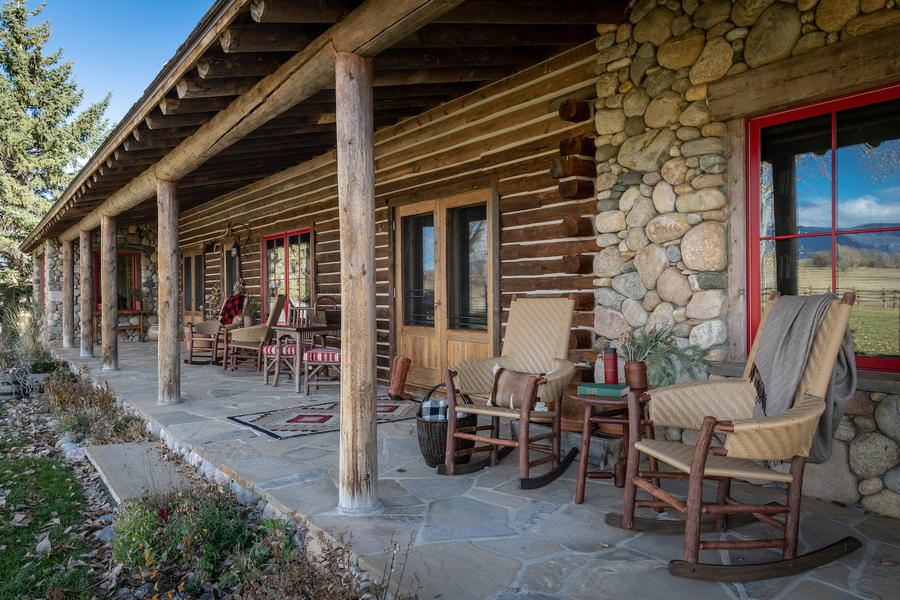
What was the impetus for the move?
You start noticing that you’re too far away. Red Lodge is this beautiful place at the base of the Beartooth Mountains, one of the gateways to Yellowstone. It’s a great tourist place and great for second homes, but it’s a very small town and you’re only going to get so many bodies through the door. Moving to a bigger city—Billings is the biggest city in Montana, so you’ve got a bigger population base. And then, what I was saying before about the client that comes from Atlanta or Houston—the trip [to Billings] is so much easier. In order to grow, sometimes you have to make a big change.
What’s the timeline on something like that? Do you have the space picked out?
It’ll be adjacent to our studio and the gallery.
You’ll get so many hours of your life back!
Oh, gosh, yes. Before, let’s say we wanted to walk the store to look at some beautiful things with a client, we would have to drive an hour—we would meet our clients at the store an hour away. That’s hard to do.
Does that proximity help people make the connection between store and design firm?
It will. I mean, we had a design studio in Red Lodge as well, but a lot of the major design work has always come through Billings. I built this beautiful studio here, and it’s a very inspiring place to work with our clients. If you came to the store, we didn’t wear it on our sleeve—design firm, design firm, design firm. But with the new store, it’ll be so much more apparent.
When do you think that the new store will open up?
Well, we thought it would be this fall, but that just sounds like a terrible idea.
Retail is a tricky business to be in right now.
We closed our store in Red Lodge at what was, unbeknownst to us, the most perfect time. If we had had to continue to pay retail staff during this time, [it would have been a challenge]. Meanwhile, the design firm has not missed a beat. If anything, we’re more busy because of this thing.
Everybody wants to come to Montana, I would imagine.
Throngs of people are saying Montana looks pretty good right now. They look at that map and see that we have the lowest number of cases. Anecdotally, I’m hearing about so many people, especially New Yorkers, moving to Montana—just showing up and buying property, sight unseen.
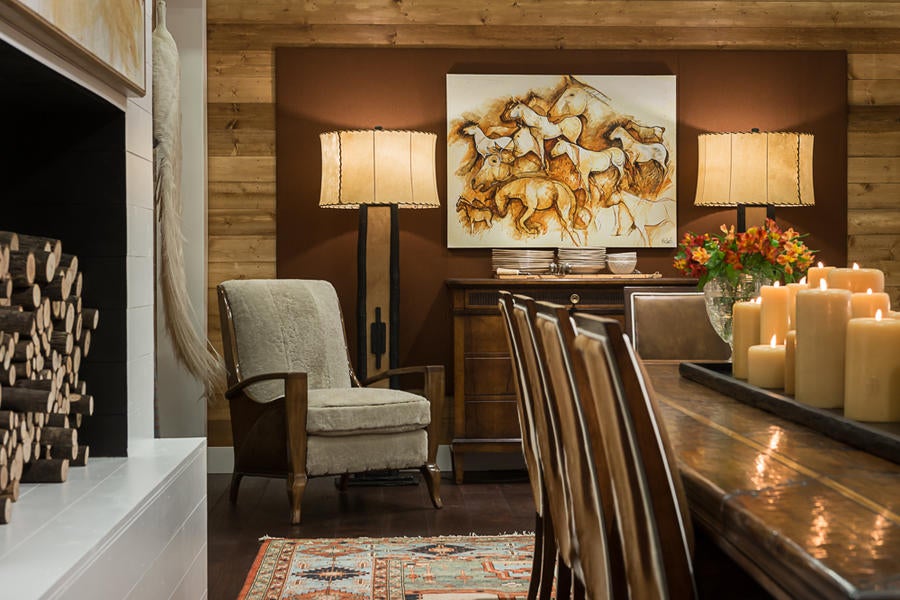
As you look ahead, what are you most excited about?
I bought this business from a woman named Rosina, and she was some pretty big shoulders to stand on. Even after we bought the business, we worked side by side for six years. She was like my partner. Even though she’s much older than I am, we always talk about how, if the stars had lined up and we had been partners early on, we felt like we would have had an empire. Not only is she a great designer, she just takes care of people—she takes care of their heart and their soul. I know I’ll never be able to do it in the way that she does, but I also have that kind of heart for people. The design, I mean, we’re both pretty good designers, but that’s the easy part. Learning to really take care of people first was so important.
I took over this firm that’s been going for 30 years now. It’s Kibler & Kirch, not Jeremiah Young Designs, like so many designers have—their namesake, and then when they’re done, there’s no end game. I’m trying to take this namesake with a great reputation so that it can go beyond me and live for another 30 or 50 or 100 years. There are some grand old design firms, Sibyl Colefax & John Fowler, but there’s really not another company like this in the West. And so that’s my hope—that it’s more than me. Who knows, maybe my little girls take it over one day.
How does that shape the day-to-day decisions you make about this business?
I think a lot about timelessness. Yesterday, I went to a lady’s house—she’s probably 85 years old. We helped her with her home 22 years ago, and we walked in there yesterday and yes, some things are dated, but it was so well done and the sense of quality is there. Styles come and go a little bit, but quality really shines through, and if something is really well done, it will last. I looked in her living room, and it’s just like, “Oh, my gosh, it’s still so beautiful.”
Is this the lady that needs sofa fabric?
Yes, because it wore out! It’s not because she didn’t love it anymore, but because her husband wore it out.
Will that job just be the sofa, or are you going to be doing other things as well?
It’s funny because we go in there and she says, “Well, if you look around and see anything else that needs to change, you let me know.” That’s the way it goes. Somebody calls you up and they’re like, “I need to paint,” but it’s never really about the paint. Five years later, you’re still working on something with them.
Is that just because people are more comfortable with a small, finite thing to reach out about?
I think so. They know something’s wrong and they can’t really put their finger on it, so they find the easiest thing. They’re like, “I need a new sofa” or “I need a rug” or “I need to paint.” When you’re like, “Well, have you thought about ... ?” people are usually very receptive. Rosina had this, and I do, too—this enthusiasm for what we do that rubs off on people.
People want to be a part of it.
They do. And then you start having fun and you’re all inspired and it’s good times.
To learn more about Jeremiah Young, visit his website or find him on Instagram.















